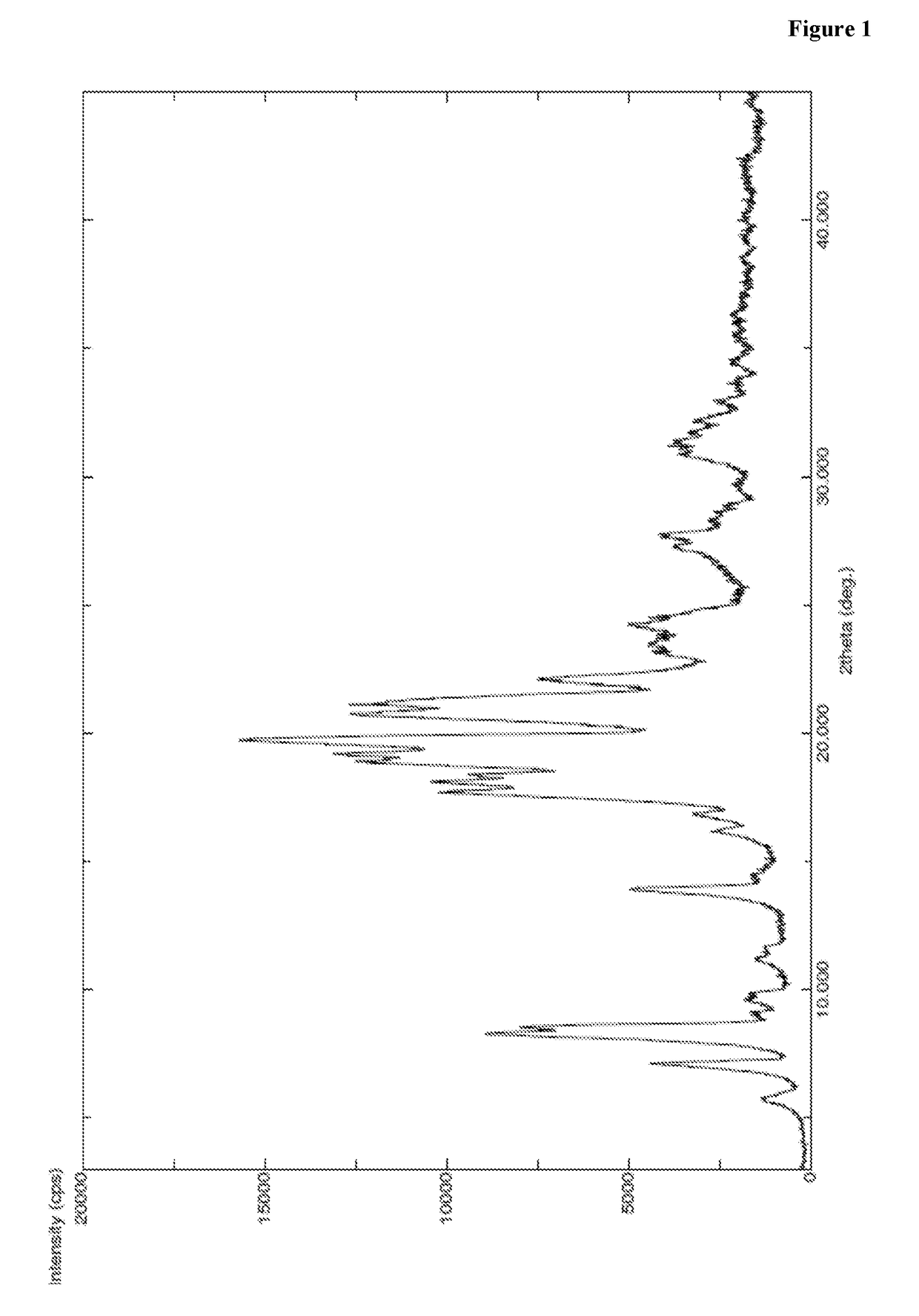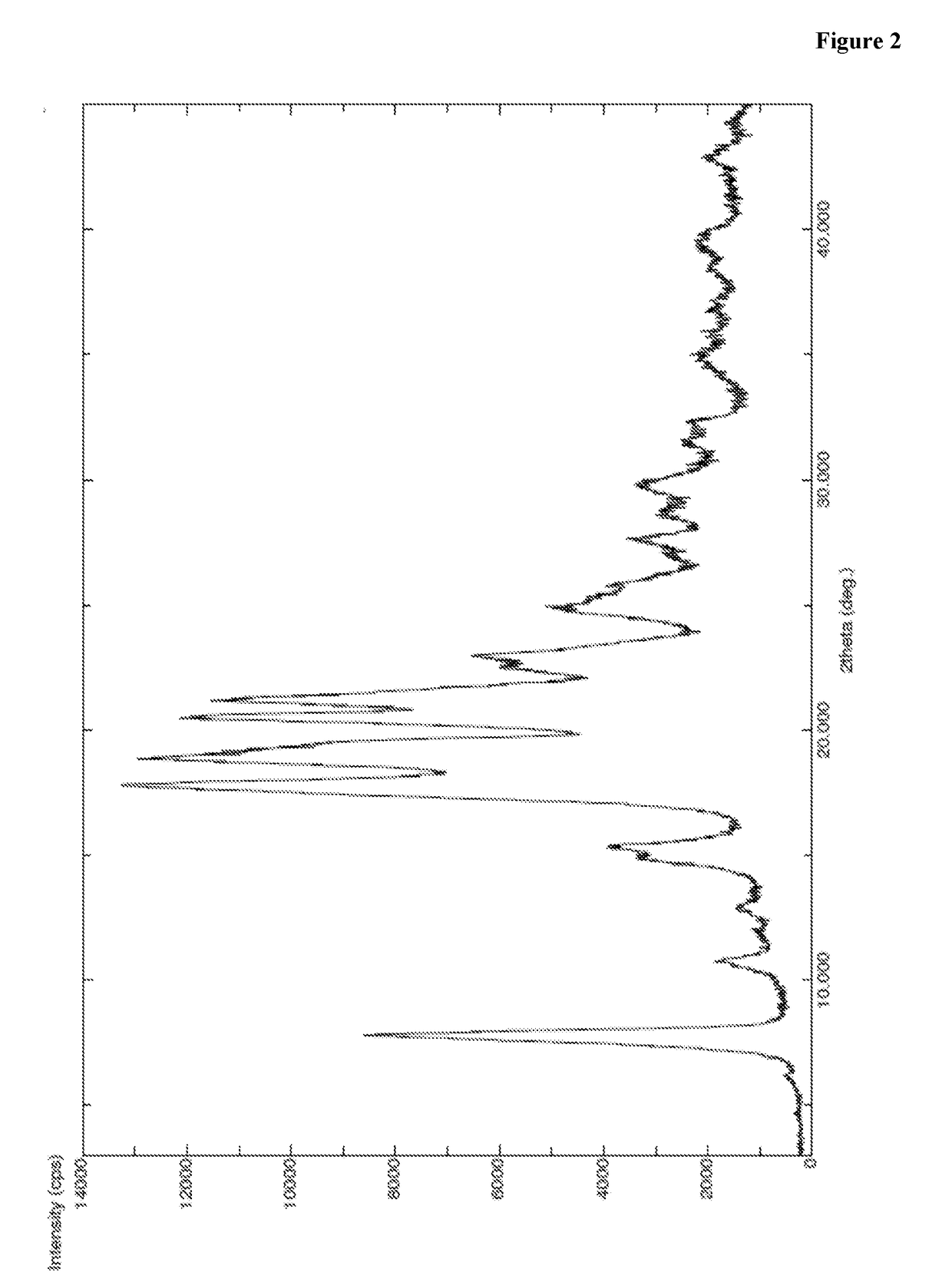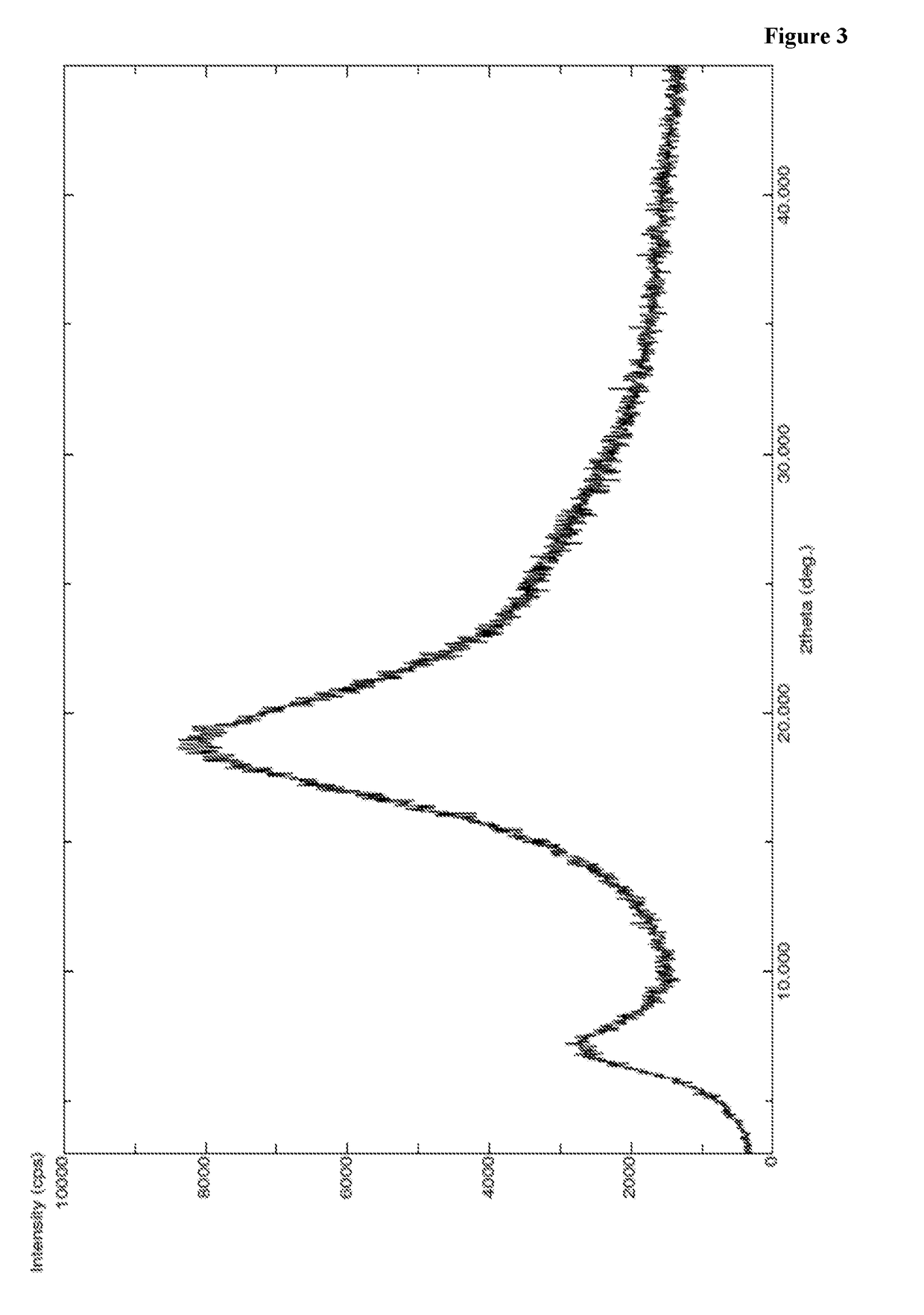An improved processes for the preparation of carfilzomib or pharmaceutically acceptable salts thereof
a technology of carfilzomib and carfilzomib, which is applied in the preparation of organic compounds, macromolecular non-active ingredients, tetrapeptide ingredients, etc., can solve the problems of increasing the manufacturing cycle time, reducing the product yield and quality, and not being able to separate the compound of formula xviii from the mixture,
- Summary
- Abstract
- Description
- Claims
- Application Information
AI Technical Summary
Benefits of technology
Problems solved by technology
Method used
Image
Examples
example 1
on of Compound of Formula IV
[0422]A mixture of N-boc-L-leucine (45 g, 1.05 eq) and toluene (500 ml) was heated to 50-55° C. and stirred for 30 min at same temperature. The reaction mass was distilled completely under vacuum at less than 55° C. to obtain residue. To the obtained residue dimethyl formamide (250 ml) was charged at 25-30° C. and allowed to cool to 2-6° C. To the reaction mass HOBt (2.4 g, 0.1 eq), PyBOP (107 g, 1.2 eq) and L-phenyl alanine benzyl ester hydrochloride (50 g, 1 eq) and diisopropyl ethyl amine (89 g, 4 eq) were sequentially added at 2-6° C. and stirred for 5 min at same temperature. Then the reaction mass was heated to 25-30° C. and stirred for 2-3 hr at same temperature. After completion of the reaction, reaction mass was quenched in to water (2500 ml) at 25-30° C. and stirred for 3-4 hr at same temperature. Precipitated solid was filtered, washed with water (250 ml) and dried to get the title compound. Yield: 77.5 g; PXRD: FIG. 1; DSC: endothermic peak at...
example 2
on of Compound of Formula VII
[0423]A mixture of methylene chloride (90 ml) and trifluoro acetic acid (210 ml) was allowed to cool to 2-6° C. and compound of Formula IV (100 g, 1 eq) was added at same temperature. Then the reaction mass was heated to 25-30° C. and stirred for 2 hr at same temperature. To the reaction mass methylene chloride (1.5 lit) was added and pH adjusted to 7-8 with 20% sodium carbonate at 25-30° C. and stirred for 20 min at same temperature. Separated the organic layer and washed with water (300 ml) and 10% sodium chloride (300 ml) sequentially. Organic layer was separated and concentrated under vacuum at below 35° C. to obtain residue. The obtained residue was dissolved in dimethyl formamide (500 ml) and allowed to cool to 2-6° C. To the reaction mass HOBt (2.9 g, 0.1 eq), PyBOP (133.5 g, 1.2 eq), N-boc-homo phenyl alanine (59.7 g, 1 eq) were added slowly at 2-6° C. To the reaction mass HOBt (2.9 g, 0.1 eq), PyBOP (133.5 g, 1.2 eq), N-boc-homo phenyl alanine (...
example 3
on of Compound of Formula VIII
[0424]A mixture of methanol (150 ml), methylene chloride (150 ml), compound of Formula VII (30 g) and 10% Pd / C (6 g) were charged in to 2 lit auto clave at 25-35° C. and purged hydrogen gas at 25-30° C. for a period of 36 hr. After completion of the reaction, filtered the reaction mass and filterate was distilled under vacuum at below 40° C. To the obtained compound n-heptane (120 ml) was added at 25-35° C. and stirred for 1-2 hr at same temperature. The solid obtained was filtered and dissolved in ethyl acetate (120 ml) at 25-35° C. The obtained solution was added in to n-heptane (450 ml) at 25-35° C. and stirred for 2 hr at same temperature. Precipitated solid was filtered, washed with n-heptane (90 ml) and dried to get the title compound. Yield: 24 g; PXRD: FIG. 3; DSC: endothermic peak at about 64° C.; Chemical purity by HPLC: 97.2%.
PUM
| Property | Measurement | Unit |
|---|---|---|
| temperature | aaaaa | aaaaa |
| temperature | aaaaa | aaaaa |
| temperature | aaaaa | aaaaa |
Abstract
Description
Claims
Application Information
 Login to View More
Login to View More - R&D
- Intellectual Property
- Life Sciences
- Materials
- Tech Scout
- Unparalleled Data Quality
- Higher Quality Content
- 60% Fewer Hallucinations
Browse by: Latest US Patents, China's latest patents, Technical Efficacy Thesaurus, Application Domain, Technology Topic, Popular Technical Reports.
© 2025 PatSnap. All rights reserved.Legal|Privacy policy|Modern Slavery Act Transparency Statement|Sitemap|About US| Contact US: help@patsnap.com



